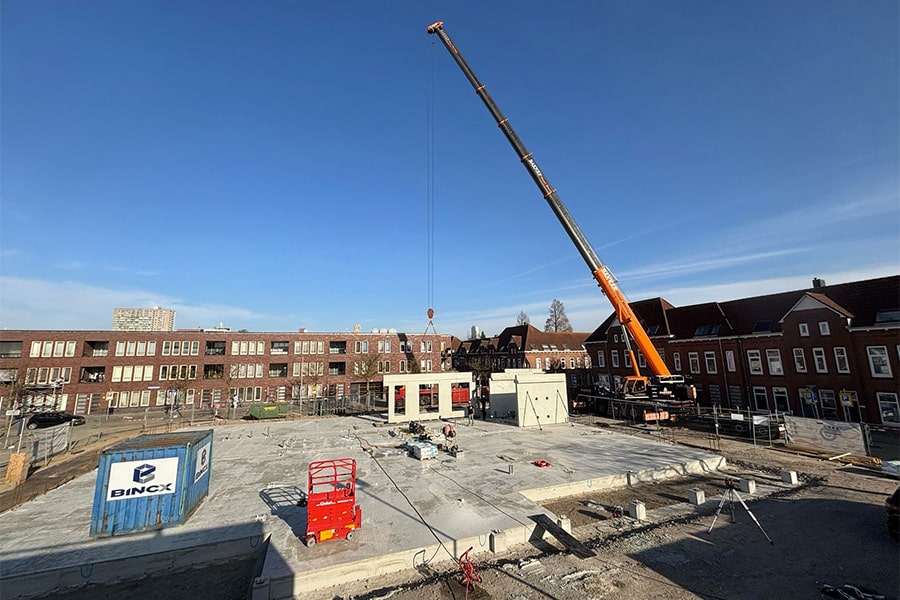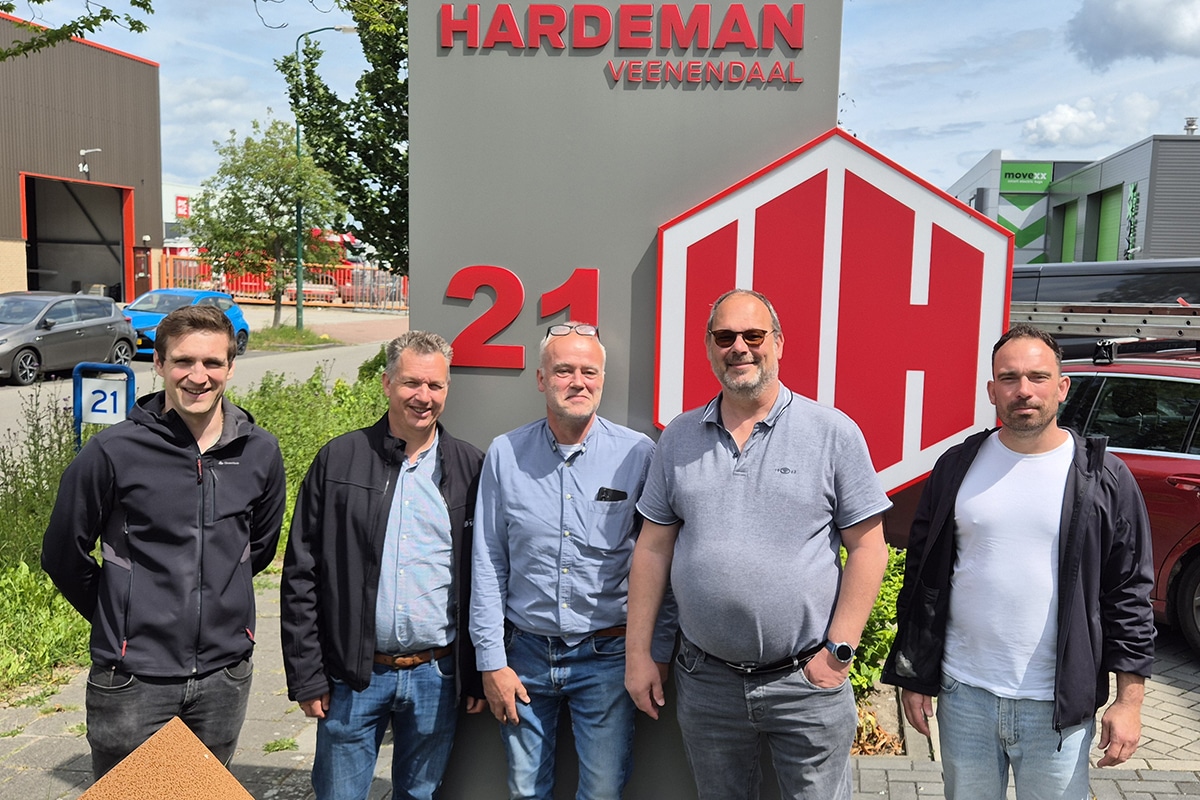
Bicycle bridge made of geopolymer concrete N69 is 75% cleaner than traditional concrete
As part of the N69, the new connecting road between Eindhoven, the A67 and the Belgian border, a new bicycle and pedestrian bridge was installed near Westerhoven last July. For both the bridge deck, bridge abutments and baffle plates of the state-of-the-art bridge, Jansen Beton supplied geopolymer concrete, a concrete mixture containing 100% recycled raw materials. This makes these raw materials an extremely sustainable alternative to primary sand and primary gravel. The certified recycled raw materials become available after tar asphalt granulate is thermally cleaned at Jansen Recycling BV in Son.
The combination of geopolymer as a binder and recycled raw materials results in a very low environmental impact. "If you compare the MKI values of traditional Portland cement concrete with the geopolymer concrete used, they are as much as 70 percent lower for the abutments and the risers," says Han Heijsters, co-responsible within Jansen Beton for sustainability policy in the broad sense. "But even in the case of the post-tensioned bridge deck, with a span of 16 meters and a much higher compressive strength, the reduction of 60 percent is substantial."

Innovations
With the construction of the N69, client Province of Brabant aims to roll out the greenest road in North Brabant. To achieve this, several innovations have been applied. The bridge constructed from geopolymer concrete and developed within twelve months is one of them. Besides Jansen Beton BV, the construction team consisted of main contractor Boskalis and SQAPE, responsible for the geopolymer technology. "Under the watchful eye of delegates from the Province of North Brabant, the construction team members and other interested parties, the on-site poured bridge deck of post-tensioned concrete was lifted into place on July 6," Heijsters looks back.
Security risk
Projects carried out within the Netherlands using geopolymer concrete meet the growing need for sustainability. At the same time, these works are characterized by an ever-increasing safety risk. The construction of the revolu-tionary bicycle and pedestrian bridge was at the forefront of this, necessitating a wide range of tests. "A test pour took place on January 20," continued Heijsters. "In addition to the well-known test cubes, beams and impact plates were poured. These were subsequently tested at Jansen Beton BV, the SQAPE laboratories and the TU in Delft. To minimize risks, the entire process was externally monitored and verified by SKG-IKOB. After this, the Province of North Brabant and Witteveen and Bos gave the green light for final execution. Also, the MKI calculations were externally verified by a recognized LCA expert."

Solution
As more and more is known about the performance of the various sustainable concrete mixtures applied and the number of pilots is also increasing dramatically, geopolymer concrete is definitely leaving its infancy, according to Heijsters. Consequently, there is nothing left standing in the way of broader applications with larger volumes.
"If we want to meet the climate goals and the agreements made in the Concrete Agreement, this is one of the solutions. Clients who want to reduce environmental impact should therefore ask larger projects specifically for the concrete to be applied for MKI values. If we remain stuck in the pilot phase of geopolymer concrete, we are missing a tremendous opportunity. Of course, with innovative products, risks must be properly assessed and minimized so that they become acceptable. Continuing as before, however, is not an option."



